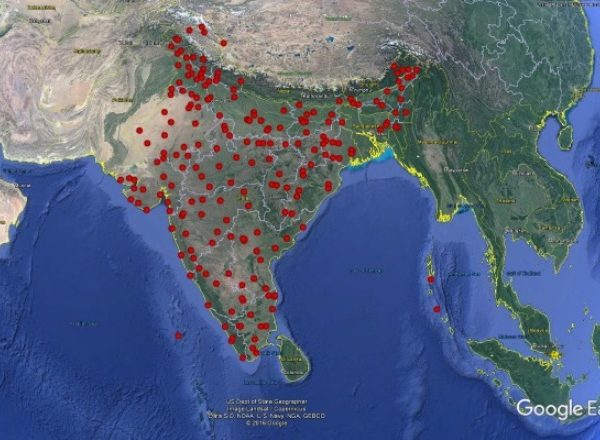Overview
Pager Power has lived through the rises and falls of both the wind and solar industry over the last decade. Therefore, as we enter 2020, it is worth investigating and understanding the outlook for UK renewables and how the shape of the UK renewable industry will change over the next few years. Renewable energy and climate change are also very much at the forefront of public interest thanks to what some are calling the ‘Greta Effect’, and more people than ever are interested in how these industries will help solve global climate issues. In this article we therefore present an overview of the state of the UK solar industry along with a brief summary of the global outlook.
UK Solar Industry
From 2014 to June 2019, solar capacity in the UK increased from 5,488.6 MW to 13,259 MW. Since the beginning of 2019, there has been an additional 1,436 MW of capacity installed. By 2023, this number is expected to rise to 2,711 MW. The total UK solar PV capacity is predicted to be at 15,674 MW by 2023[1].
Figure 1: UK Solar Capacity: Is the Future of Solar Cloudy? By Greenmatch.
In 2019, the popular Feed-in-Tariff scheme was closed, and the number of new solar development projects dropped significantly[2]. The sharp drop off was exacerbated by the removal of subsidies which meant there was a rush to have all developments submitted for planning permission before the subsidies were removed.
Pager Power also saw a resurgence in the number of solar projects in 2019 following a dip in 2018[3]. It is understood this rise was due to new projects coming through the pipeline which are now subsidy free and readying submission to the planning authority.
In mid to late 2019, it appeared that much larger schemes were now starting to come through the pipeline, with a more typical scheme size being 50MW. Solar developments that are now being proposed are much larger than those from a year or two ago during the subsidy era because the economies of scale mean larger sites are required to be cost effective. Back in 2016 the maximum size was around 5MW, the average size of development is now 30MW[4]. There are also a number of proposed projects which are hundreds of MW in size.
Furthermore, it is now far more common to see tracking systems being proposed in the UK. Tracking systems make better use of the sunlight by tracking the Sun throughout the day to maximises light absorption into the panel and thus, energy production. Whilst these mounting systems are more expensive than the typical static ground mount frame, they start to make much more financial sense when the size of the development proposed is much larger with a much greater yield of electricity guaranteed.
Going forward, it is the author’s prediction that there will be less ‘small’ (~5MW) solar development, with the trend heading towards fewer but larger solar developments.
The Global Solar Outlook
An article by The Guardian stated that global renewable energy generation could increase by 50% over the next five years powered by solar PV energy[5]. Within the article it is cited that the latest International Energy Agency (IEA) report states that by 2024, cheap solar power could see the world’s solar capacity grow by 600GW. This is almost double the installed total electricity capacity of Japan.
In the USA, a 2019 report published by Deloitte[6] stated that the market in the USA was optimistic because, whilst taxes on imported equipment form locations such as China may be increasing, ongoing reductions in project and construction costs were expected to offset the additional import costs.
A Green Tech Media article[7] states that key international solar markets to watch include:
- Chile
- China
- Ethiopia
- Greece
- Hungary
- India
- Indonesia
- Netherlands
- Oman
- Poland
- South Korea
- Ukraine
- USA
The article provides a brief overview of each market.
Conclusions
It appears that the typical ground mounted solar development in the UK is getting larger in the subsidy free era. Tracking systems which improve efficiency are now also becoming economically viable. Overall, it is understood that the solar industry in the UK will continue to grow but it will consist of much larger schemes rather than single digit MW schemes.
References
[1] UK Solar Capacity: Is the Future of Solar Cloudy? Greenmatch, 19.12.2019.
[2] The present and future of UK solar power, Gary Hartley, Energy Saving Trust, 8.07.2019
[3] Pager Power completed 18 UK glint and glare projects in 2018 and 70 in 2019.
[4] UK utility solar to return to GW demand status in 2020 as desired energy type going forward, Finlay Colville, Solar Power Portal, 3.12.2019.
[5] Renewable energy to expand by 50% in next five years – report, Jillian Ambrose, The Guardian, 31.10.2019
[6] Deloitte 2020 renewable energy industry outlook, Marlene Motyka, 2019.
[7] 18 Wind and Solar Markets to Watch in 2020, Jason Deign, Green Tech Media, 26.11.2019.
Image accreditation: UK Solar Capacity: Is the Future of Solar Cloudy? By Greenmatch
https://www.greenmatch.co.uk/blog/2019/09/uk-solar-capacity
2 Comments
-
I believe that solar has a promising future. In fact, istallation costs may get even cheaper while savings grow higher. The savings on your monthly utilities is substantial and the tax incentives are fantastic.
-
Thank you for your comment. We also believe solar has a positive future, both for large scale commercial schemes and domestic projects. With the current global crisis, people may be more willing than ever to install domestic solar PV to reduce their energy bills and give themselves some level of energy security.
-


